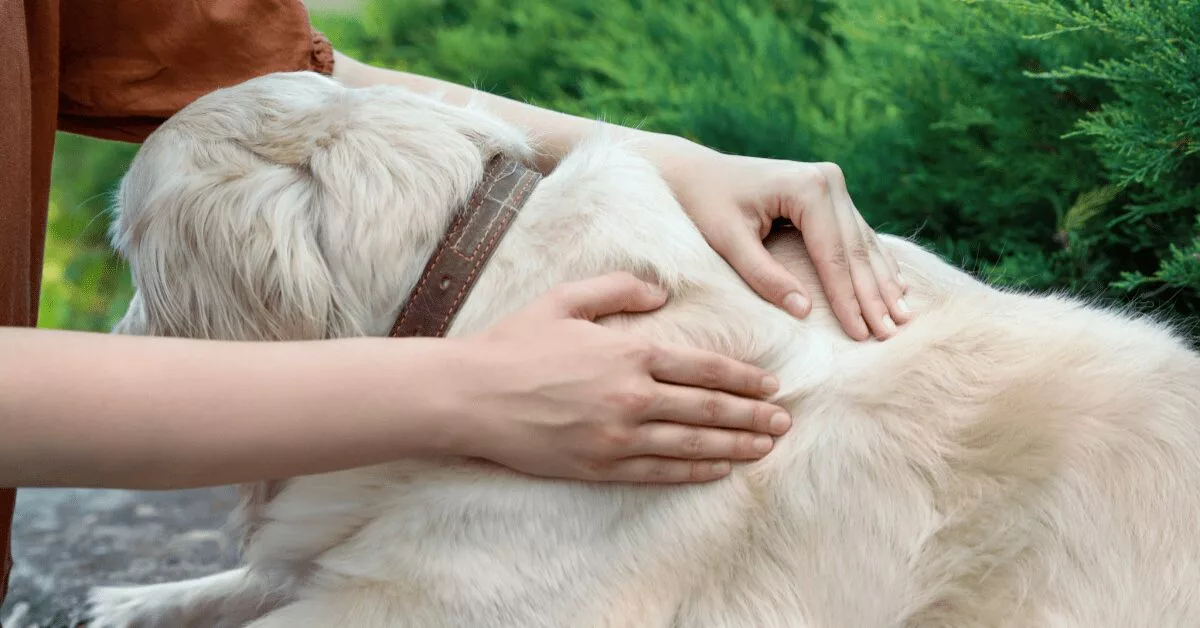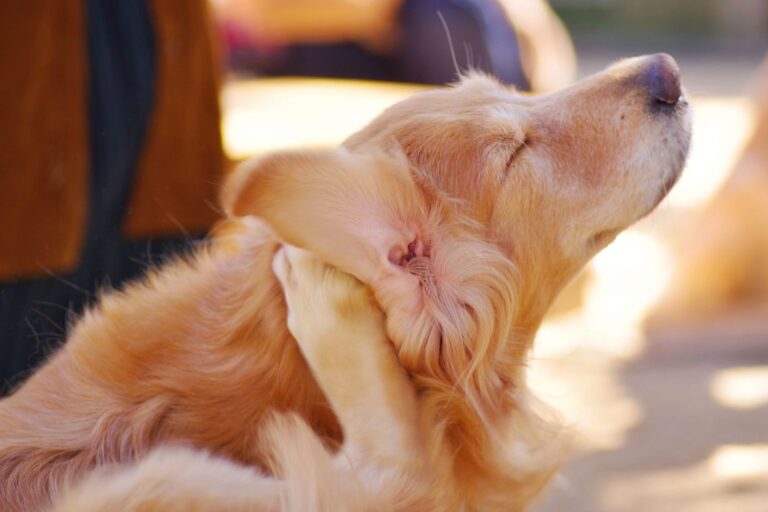Why does my dog have bumps on his back? These bumps can be caused by a variety of factors such as fat, tumors, cysts, infection, allergic reactions, or even cancerous tumors.
It is important to consult with a veterinarian to get an accurate diagnosis and appropriate treatment plan for your dog.
Causes Of Bumps On A Dog’s Back
When it comes to bumps on a dog’s back, there can be various causes that pet owners should be aware of. These bumps can range from mild skin infections and allergic reactions to more serious conditions such as benign and malignant tumors, as well as sebaceous cysts and other growths.
Skin Infections And Allergic Reactions
Skin infections and allergic reactions can both lead to the development of bumps on a dog’s back.
Common causes of skin infections in dogs include bacteria, fungi, and parasites such as fleas or mites. These infections can cause redness, itching, and the formation of bumps or pustules on the dog’s skin.
Allergic reactions, on the other hand, can be triggered by a variety of factors such as certain foods, environmental allergens like pollen or dust mites, or even contact with certain materials. These reactions can cause the dog’s immune system to overreact, leading to the formation of bumps and rashes on the skin.
Benign And Malignant Tumors
Benign and malignant tumors can also be a cause of bumps on a dog’s back.
Benign tumors are non-cancerous growths that usually do not pose a serious threat to the dog’s health. These tumors can include lipomas, which are fatty tumors, as well as other types of growths such as papillomas or fibromas.
Malignant tumors, on the other hand, are cancerous growths that can spread to other parts of the body. These tumors can be more aggressive and may require immediate medical attention. Common malignant tumors in dogs include mast cell tumors, melanomas, and sarcomas.
Sebaceous Cysts And Other Growth
Sebaceous cysts and other growths are another potential cause of bumps on a dog’s back.
Sebaceous cysts are small bumps that can resemble pimples or warts. These cysts form when oil glands become blocked, leading to the accumulation of sebum. They may release a pasty, white substance when they burst or become infected.
| Causes of Bumps on a Dog’s Back |
|---|
| Skin Infections |
| Allergic Reactions |
| Benign and Malignant Tumors |
| Sebaceous Cysts and Other Growth |
- Skin infections can be caused by bacteria, fungi, or parasites.
- Allergic reactions can be triggered by certain foods or environmental allergens.
- Benign tumors are non-cancerous growths, including lipomas and papillomas.
- Malignant tumors are cancerous growths that can spread to other parts of the body.
- Sebaceous cysts form from blocked oil glands and can resemble pimples or warts.

Credit: www.dailypaws.com
Identifying And Diagnosing Bumps On A Dog’s Back
If you notice bumps on your dog’s back, it could be caused by various factors such as fat, tumors, cysts, infection, or allergic reactions. It’s important to get a proper diagnosis from a veterinarian to determine the cause and appropriate treatment.
Signs And Symptoms To Look For
If you notice bumps on your dog’s back, it’s important to pay attention to any accompanying signs and symptoms. This will help you in identifying the possible cause and severity of the issue. Some common signs and symptoms to look for include:– Redness and Swelling: If the bumps appear red and swollen, it could indicate an infection or allergic reaction. – Itching and Scratching: Excessive itching and scratching around the bumps may suggest skin irritation or a parasite infestation. – Pain or Discomfort: If your dog seems to be in pain or discomfort when you touch or pressure is applied to the bumps, it could be a sign of something more serious. – Oozing or Pus: If the bumps are oozing fluid or pus, it could be a sign of infection and should be addressed by a veterinarian. – Changes in Behavior: Keep an eye out for any changes in your dog’s behavior, such as loss of appetite, lethargy, or unusual aggression, as these may be indications of a more serious underlying condition.When To Consult A Veterinarian
While some bumps on your dog’s back may be harmless and resolve on their own, others may require veterinary attention. It’s best to consult a veterinarian if you notice any of the following:– The bumps are rapidly growing in size or number. – There is significant redness, swelling, or oozing. – Your dog is in pain or discomfort. – Your dog’s behavior has changed significantly. – The bumps are accompanied by other symptoms, such as fever or lethargy. – You are unsure of the cause or are concerned about the bumps.A veterinarian will be able to examine the bumps and perform any necessary diagnostic procedures to determine the cause and appropriate treatment.Diagnostic Procedures
When it comes to identifying and diagnosing the underlying cause of the bumps on your dog’s back, veterinarians may use various diagnostic procedures. These may include:– Physical Examination: A thorough physical examination of the bumps and the surrounding skin will provide valuable information to the veterinarian. – Skin Scraping: Skin scraping involves gently scraping the surface of the bumps to collect skin cells for analysis under a microscope. This can help detect the presence of parasites or identify skin infections. – Fine Needle Aspiration (FNA): FNA involves inserting a fine needle into the bumps to collect a small sample of cells or fluid. This sample is then analyzed to determine if the bumps are benign or potentially cancerous. – Biopsy: In some cases, a biopsy may be necessary to obtain a larger portion of tissue from the bumps. This tissue is then examined under a microscope to determine the cause and nature of the bumps. – Allergy Testing: If an allergic reaction is suspected, allergy testing may be performed to identify potential allergens and develop an appropriate treatment plan. By performing these diagnostic procedures, veterinarians can accurately diagnose the cause of the bumps on your dog’s back and recommend the most suitable treatment options. Remember, early diagnosis and treatment are essential for your dog’s health and well-being.Treatment And Prevention Of Bumps On A Dog’s Back
If you notice bumps on your dog’s back, there could be various causes such as fat pockets, cysts, infections, or even cancerous tumors. It is crucial to consult with a veterinarian for a proper diagnosis and treatment plan.
Medical Treatments And Interventions
When it comes to treating bumps on your dog’s back, it is important to consult with a veterinarian for proper diagnosis and treatment options. Depending on the cause of the bumps, your vet may recommend different medical treatments and interventions to alleviate the issue.
If the bumps are caused by cysts, your veterinarian may suggest draining the cysts or surgically removing them. In some cases, medications such as antibiotics or anti-inflammatory drugs might be prescribed to treat underlying infections or reduce inflammation.
For more serious conditions like cancerous tumors, your vet may discuss the possibility of surgical removal or other specialized treatments, such as chemotherapy or radiation therapy. Each case is unique, and it’s essential to follow your vet’s guidance.
At-home Care And Remedies
While medical treatments are primarily administered by professionals, there are some measures you can take at home to help alleviate the bumps on your dog’s back.
- Regularly cleaning your dog’s skin with a gentle, pet-friendly shampoo can help prevent further skin irritation and reduce the risk of infection.
- Applying a warm compress to the bumps can help soothe any discomfort your dog might be experiencing.
- Avoiding harsh chemicals and irritants in your dog’s environment, such as certain cleaning products or pesticides, can help prevent future bumps from occurring.
- Providing your dog with a balanced and nutritious diet can support overall skin health and boost the immune system.
Preventive Measures
To prevent bumps on your dog’s back, there are several preventive measures you can take.
- Regularly grooming your dog by brushing their coat and checking for any abnormalities, such as bumps or lumps.
- Ensuring your dog receives regular veterinary check-ups to catch any potential issues early on.
- Keeping your dog’s living environment clean, including their bedding and toys, to reduce the risk of infections.
- Using high-quality and hypoallergenic grooming products to minimize the chances of skin irritation or allergic reactions.
- Avoiding contact with known allergens or irritants that may trigger skin conditions in your dog.
By following these preventive measures and providing optimal care for your dog, you can significantly reduce the likelihood of bumps appearing on their back.

Credit: www.holistapet.com

Credit: www.pumpkin.care
Frequently Asked Questions Of Why Does My Dog Have Bumps On His Back
How Do I Treat Bumps On My Dog’s Back?
To treat bumps on your dog’s back, consult with a veterinarian for an accurate diagnosis and treatment plan. Various causes can include fatty tumors, cysts, infections, allergic reactions, or more serious issues like cancerous tumors. A vet may recommend ointments, supplements, or other skin treatments based on the specific condition.
Is It Normal For Dogs To Have A Bump On Their Back?
It is common for dogs to have bumps on their back. These bumps can be caused by various factors such as fat deposits, cysts, tumors, allergic reactions, or skin infections. If you notice any unusual growths, it is best to consult with a veterinarian for a proper diagnosis and treatment plan.
Should I Be Worried About Bumps On My Dog?
If you notice bumps on your dog, it’s best to have them examined by a veterinarian. Look out for fast growth, redness, swelling, pus, or signs of pain. Some bumps can be benign, while others may require treatment. Your vet can provide an official diagnosis and recommend appropriate treatment.
Why Does It Look Like My Dog Has Bumps Under Her Fur?
Dog bumps under fur can be caused by various factors like benign growths, skin infections, allergic reactions, or cancerous tumors. It’s best to consult a vet for an official diagnosis and treatment plan.
Conclusion
When it comes to bumps on your dog’s back, it’s important not to jump to conclusions. There are various causes for these bumps, including benign fatty tumors, cysts, infections, and even cancerous tumors. If you notice any fast growth, redness, swelling, pus, or if your dog is in pain, it’s crucial to take them to the vet for a proper examination and diagnosis.
By consulting with your vet, you can develop an appropriate treatment plan and ensure the health and well-being of your furry friend.



